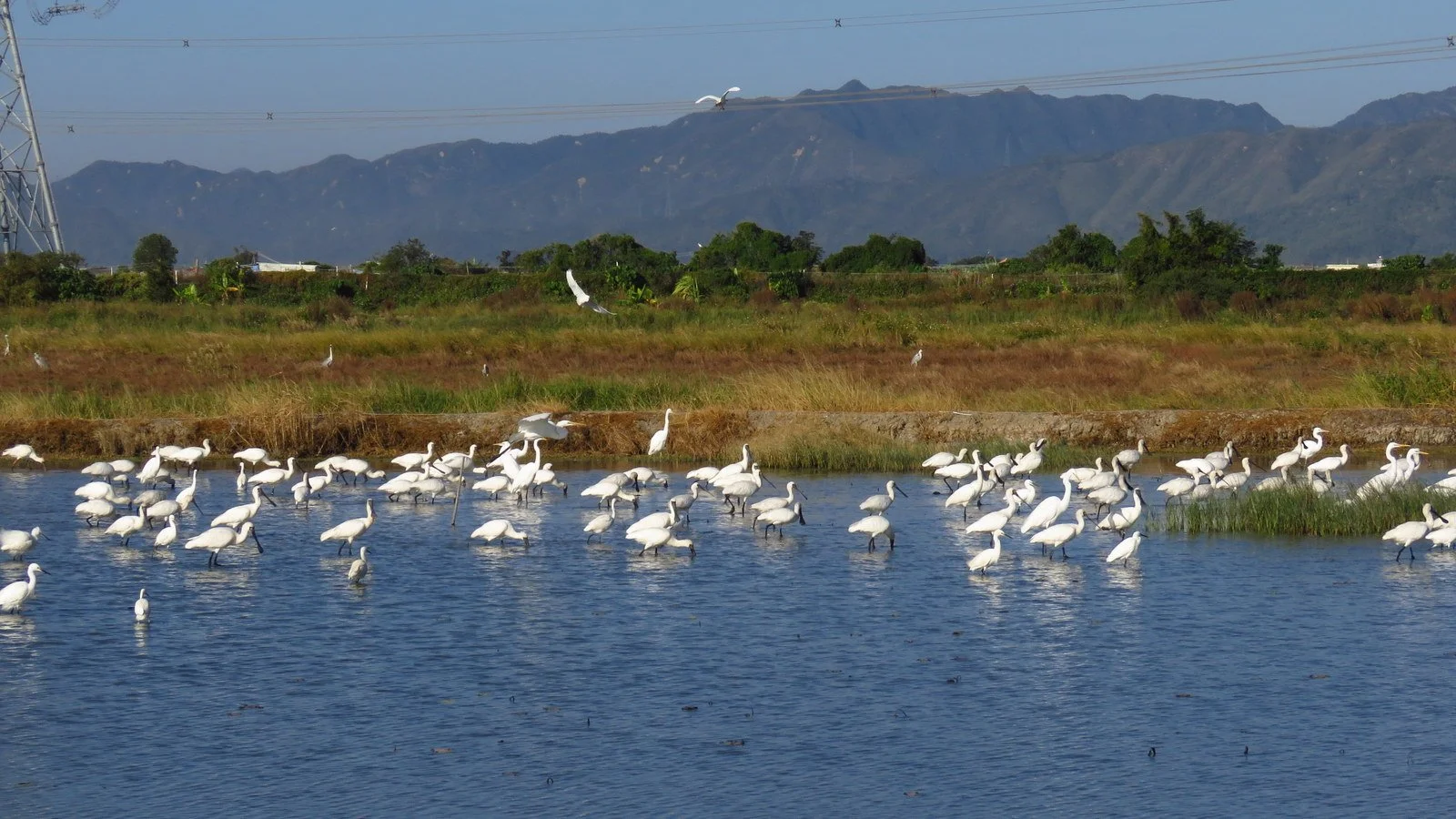New paper: Conservation Management Matters! Insights from a Recovering Migratory Waterbird
In a recent study led by Mu-Ming Lin, published in Global Ecology and Conservation, we explored how conservation-oriented management benefits the Black-faced Spoonbill across different regions. This endangered migratory waterbird has been brought back from the brink of extinction thanks to dedicated conservation efforts.
Despite these efforts, the Black-faced Spoonbill still faces serious threats from habitat loss due to growing human activities and climate change. To better inform the species' long-term conservation strategies, we investigated how various factors in conservation management impact their occurrence and how these impacts differ across regions.
During the winter of 2021–2022, we surveyed the occurrence and abundance of the Black-faced Spoonbill across their main wintering areas, focusing on six major sites in Taiwan and the Chinese mainland. We found that spoonbills in all sites were more likely to inhabit wetlands that were under conservation management. The preferred wetlands were larger, had water depths of 10–20 cm, featured vegetated bunds, and used fewer artificial materials along the edges. Interestingly, the benefits of conservation management in attracting more spoonbills varied by region, with Taiwan showing a more significant positive impact.
A wetland in Haifeng, Guangdong ideal for the Black-faced Spoonbill, featuring a relatively large size, 10–20 cm water depth, vegetated bunds, and edges formed by soil. Photo by Mu-Ming Lin in 2021.
Why did conservation interventions increase the chance of Black-faced Spoonbills using the wetlands, but significantly increase their numbers only in Taiwan? First, this could be because Taiwan has a larger wintering population of spoonbills compared to the Chinese mainland, possibly forming stronger core groups that attract more birds. On the other hand, this also suggests that the conservation management practices and their effectiveness might differ by region. Are some of Taiwan’s conservation measures more effective or more intensive than those in the Chinese mainland? Future research can further explore this.
Moreover, although the Black-faced Spoonbill is known to adapt to various artificial wetlands such as fishponds and salt pans, our findings suggest that relying solely on existing aquaculture ponds, or simply protecting natural wetlands without active conservation interventions, is unlikely to support the current recovery of the Black-faced Spoonbill. Active management and targeted conservation efforts are essential to sustain and enhance the spoonbill population.
Despite the current population increase of Black-faced Spoonbills, it is vital to sustain and enhance conservation efforts, since this threatened species benefits substantially from such actions. Our findings provide quantitative evidence supporting the efficacy of conservation interventions. Key takeaways include the importance of continuing and enhancing conservation management practices tailored for the Black-faced Spoonbill, particularly in regions with slower recovery rates, to ensure their long-term sustainability.
